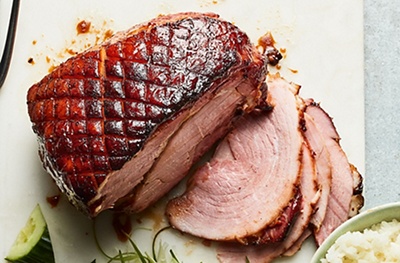
The centrepiece to a quintessential British Sunday lunch, tender and juicy roast beef is simply unbeatable. Whether you like it rare, medium or well-done, we’ve got expert tips on how to achieve perfect roast beef, every time.
Choose the best cut for roast beef
Choose the best cut for roast beef

Buy a joint slightly larger than you actually need, as smaller joints tend to shrink a little in the oven; use any leftovers for delicious midweek meals.
For lean joints off the bone, allow 200-250g meat per person, so choose a joint around 2kg for 6 people. When you’re buying a joint of meat on the bone (such as sirloin or rib) as a general rule you’ll need about 400g meat per person. So for 6 people you’ll need a joint that weighs around 2.5kg, which will usually be a 2 or 3 rib joint.
TOPSIDE ROASTING
This is a lean, tender joint of beef, sold boned and rolled for roasting. To retain its moisture it should be ‘barded’ (covered in a layer of fat, often already done for you) with beef dripping, olive oil or butter before roasting for best results. Alternatively, it can be pot-roasted in liquid, often with other ingredients to add flavour, such as with pot-roast topside of beef with chimichurri.
Shop topside
Top rump
Often sold simply as a roasting joint, this is a very lean cut that tenderises during long, slow cooking methods. You’ll often get better results from pot-roasting this cut with some liquid and flavourings rather than straight oven roasting.
Shop rump
Rib of beef
A tender joint cut from above the brisket, also known as forerib. It has a seam of fat running through it, giving lots of flavour. Bone-in and boned rib are popular joints for traditional Sunday roast beef, served with Yorkshire puddings and horseradish sauce. Try slow roasted brined wing rib of beef heady with flavours of rosemary and black pepper.
Shop rib of beef
sirLoin
A prime roasting joint with very tender meat, cut from the area just behind the rib of beef (so they have similar characteristics). Sirloin joints produce lean, tender slices of beef, excellent with all the Sunday roast dinner trimmings. Baste regularly during cooking. Sirloin is delicious served quite rare.
Shop sirloin
Fillet
The most tender cut of beef available, taken from the centre of the sirloin along the back of the animal. A boneless beef fillet joint may be stuffed and roasted whole (when purchasing a beef fillet joint for roasting allow 100-175g per person).
Shop fillet
Brisket
A cut taken from just below the shoulder, brisket is a fairly firm cut of beef that really delivers on texture and flavour when slow-cooked in liquid until tender. It also loves a marinade or flavour rub. Try Italian-style pot roast brisket with pappardelle & gremolata.
Shop brisket
Roast beef cooking times & temperatures
Roast beef COOKING times & temperatures
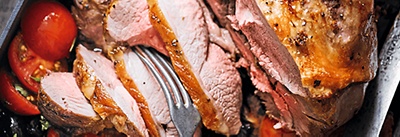
Boneless topside, sirloin (boneless and bone-in), rib of beef
Oven
180°C
Fan
160°C
Gas
4
If you’re enjoying any of these cuts, the timings are the same. But if you’re cooking a larger roasting joint (more than 1.5kg), start it off at 240ºC, fan 220ºC, gas 9 for the first 20 minutes to let the heat really penetrate the meat and give it a good crust on the outside. Remember to reduce the temperature after 20 minutes and deduct the 20 minutes from the total cooking time.
Medium-rare – 20 minutes per 500g
Medium – 25 minutes per 500g
Well-done – 30 minutes per 500g
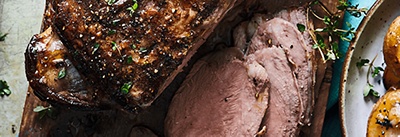
Beef fillet
Oven
180°C
Fan
160°C
Gas
4
Rub with a little oil, season, then pan-sear all over for 4-5 minutes Transfer to a roasting tin and roast (depending on the thickness of the fillet) for:
Medium-rare – 15-20 minutes per 500g
Medium – 20-25 minutes per 500g
Well-done – 25-30 minutes per 500g
(typical weight 1.8-2kg)
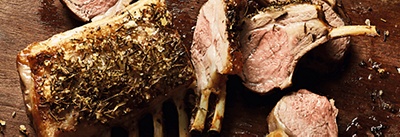
Brisket
Oven
180°C
Fan
160°C
Gas
4
Sear the brisket in a casserole, then add thickly sliced onions and aromatics, if liked, plus 300-500ml of stock, beer, cider or wine. Cover and simmer gently on the hob or transfer to the oven for:
35-40 minutes per 500g, plus 35-40 minutes (check your recipe for specific cooking instructions and timings)
(typical weight 0.75kg)
The best roast beef
The best roast beef
Waitrose Cookery School’s star chef Alex Szrok shows how to cook the perfect roast beef – including why a bigger joint size can be better, and how to baste it during cooking.
Roast beef cooking tips
Roast beef cooking TIPS
Take large joints out of the fridge 1 hour before cooking to allow the meat to reach room temperature and cook more evenly. Smaller joints (up to 1.2kg) need only 30 minutes out of the fridge.
Don’t remove the fat as it adds flavour and keeps the joint moist – if you prefer not to eat it, simply remove it after it’s cooked. Add a grinding of black pepper or rub a little English mustard powder into the fat to add a ‘crust’ on the meat.
Choose a roasting tin that’s a little larger than the joint – not too large or your precious gravy juices will evaporate. Add a peeled and halved onion and a few sprigs of herbs, such as thyme or rosemary, under your joint to form the basis of a flavoursome gravy.
There’s no need to cover your beef while it cooks; you want to get a good crust on the outside and foil won’t help with this.
Baste the meat 2-3 times during cooking; remove the joint from the oven and close the door so that the temperature doesn’t drop, then spoon the fat and juices from the roasting tin over the meat before continuing to roast.
If you’ve got a leaner cut, such as topside, top rump or brisket, you’ll get better results by pot-roasting it with some liquid to keep the meat moist and tender. You can always finish the joint off with a blast in a hot oven (or on the barbecue) to crisp up the fat and caramelise the exterior.
Roast beef recipes
Roast beef RECIPES
Choose from our favourite ways to enjoy roast beef.
Topside/roasting joint recipes
Looking for a go-to Sunday roast dinner for a family gathering? This recipe for roast topside of beef with Yorkshire puddings includes the gravy and roast potatoes too.
Rib
A fine forerib roast beef & hasselback potatoes with chimichurri rings the changes from a standard Sunday roast dinner.
Bone-in sirloin
Keep it traditional with mustard-crusted roast beef and red wine gravy.
Fillet
Roast up a rare Thai-inspired fillet of beef with a herby peanut relish.
Brisket
Learn how to braise brisket with slow-roast beef brisket with red wine and thyme.
What flavours go with roast beef?
What FLAVOURS go with roast beef?
When it comes to beef, it’s all about picking the right cuts for your dish, keeping things simple, and letting the flavour speak for itself. But there are some ingredients that match particularly well.

Mustard, garlic and pepper all complement the flavours of beef, and can be combined to make a crust as the joint roasts or added to a glaze to finish it off.
Smoky or barbecue flavours work particularly well when slow-roasting beef, as in Texan-style slow-cooked beef.

Beer, red and fortified wines are natural partners with beef; try this roast beef with blackberry & port sauce.
Create a stir with these alternative pairings
Create a stir with these alternative pairings
How to check your roast beef is cooked
How to check your roast beef is cooked
- Rare, medium or well-done? Our guide to cooking times (above) will help you cook the beef to your liking.
Check your beef is cooked by piercing the thickest part of the joint with a skewer – if the juices are pinky-red, the meat will be medium-rare, slightly pink and it’s medium, and if you want it well-done, they should run clear.
- A meat thermometer is the most accurate way to check for doneness, especially with larger joints. Push the probe into the meat as close as possible to the centre (avoiding any bones) and leave it for 20 seconds before taking the reading. Rare beef should read 50ºC, medium 60ºC and well-done 70ºC.
Always ensure all the cut surfaces of the meat are thoroughly cooked.
Give your roast beef a rest
Give your roast beef a rest
- It’s crucial to rest any roast meat after it’s cooked. Resting allows the juices on the outside of the meat to settle back into the middle and throughout the joint, making it juicier and easier to carve.
- Transfer your cooked beef joint to a warm platter or clean board and cover with foil. Leave it to rest for 20 minutes minimum before carving; generally, the leaner the joint, the more it will benefit from the resting time (so topside and top rump need at least 30 minutes of resting). This gives you time to make gravy and finish off any last-minute trimmings too. Don’t forget to add the resting juices to your gravy.
What to serve with roast beef
What to SERVE with roast beef
Yorkshire puddings are a must-have with roast beef.
Free up oven space and serve up air fryer goose fat roast potatoes.
Want a change from roasties? Try this Vintage Cheddar potato gratin instead.
A mixture of roast root veg such as roasted orange, maple & fennel seed glazed parsnips & carrots brings a touch of sweetness.
The umami flavours of miso cabbage are delicious with roast beef.
Save time with our prepared vegetable sides.
Sensational sauces to buy for roast beef
Sensational SAUCES to buy for roast beef
Take a shortcut to gravy by adding this velvety red wine & shallot sauce to beef roasting juices.
Roasting a beef fillet? This creamy peppercorn sauce adds a punchy finishing touch.
A dab of hot horseradish sauce is a must with classic beef.
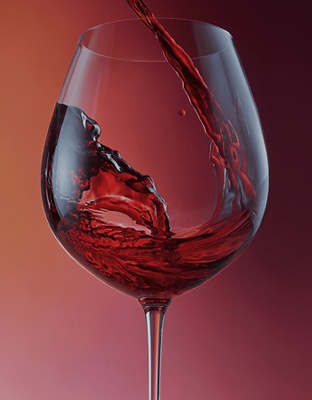
What wine to serve with roast beef
What wine to serve with roast beef
Just like steak, roast beef calls for a smooth, juicy red. Our wine guru Pierpaolo Petrassi recommends Chianti as a delightful accompaniment; look for a Chianti Classico, which is made in the historic heart of the winemaking region.

Love your lefovers
Love your LEFTOVERS
Serve thinly sliced cold rare roast beef with roast garlic cream & glazed chicory.
Transform leftover brisket into a pulled beef salad with mint & avocado, or make beef & caramelised onion sliders.
Use up leftover roast beef instead of salt beef in this recipe for beef with roast veg & a cucumber salad.
Kitchen kit for beef roasts
Kitchen kit for beef roasts
It’s just not a proper roast beef dinner if there are no Yorkshire puddings, and this dishwasher-safe Yorkshire pudding tray makes 4 large puds.
A gravy separator niftily separates out the fat for healthier gravies, as well as straining out any lumps or herb sprigs.
Cook your roast perfectly to your liking every time using a digital meat thermometer to check the internal temperature.

Best of British beef
Best of British beef
We’ve worked exclusively with many of our British beef farmers for more than 10 years – and in some cases, more than 25 years. This long-term partnership offers our farmers the security they need to invest in sustainable farming practices that help to benefit the environment and encourage local wildlife.





















?uuid=c128f8ba-dea7-4ae2-b738-232f4c144d85&$Waitrose-Image-Preset-95$)








